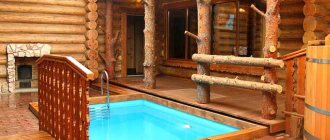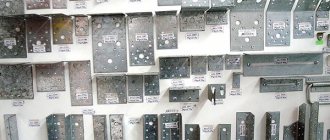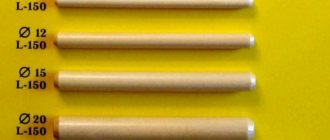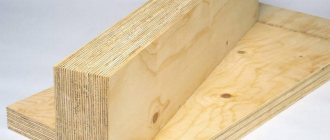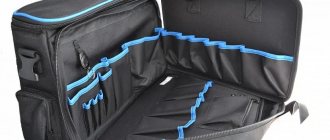In construction terminology, dowels mean rounded rods or bars designed for fastening building parts by installing them in specially prepared holes. The main purpose of dowel connections is to counteract shear forces due to the elasticity of the dowel body.
A wooden dowel for timber is called a dowel or a wooden nail; dowel (dowel) connections are used in the construction of log houses for residential buildings, bathhouses and outbuildings, and are used in the installation of various wooden structures. The technology has a long history; similar fastenings were discovered in buildings of the 16th century on the territory of modern Austria and during excavations in Veliky Novgorod.
Advantages and disadvantages of dowel joints
The advantages of using wooden dowel connections have been tested for centuries, these include:
- Dowels for timber are resistant to deformation, retain elasticity for a long time, and withstand significant bending loads;
- Fastenings counteract the negative consequences of shrinkage, eliminate the causes of the formation of cracks, crevices and gaps between the crowns;
- The timber and dowels react equally to ambient humidity and climate changes, which avoids wall deformation;
- The use of wooden fasteners allows you to build a house without the use of construction equipment and special tools.
The disadvantages include: additional labor costs due to the need to drill installation holes; when selecting materials and carrying out work, certain rules must be followed.
Safety precautions at work
Equipment for drilling holes is characterized by complex operation and significant weight. You need to work with it carefully. In addition, as holes are made in the concrete for the dowel, solid particles fly in different directions.
To protect yourself, you need to follow the rules:
- You should not work with power tools while wearing gloves, as the material may get caught on the drill, which will lead to injury;
- use safety glasses, clothing should be closed, which will avoid injury from concrete splinters;
- the drill is periodically cooled - immersed in water;
- There should be no children or animals near the area where the work is being carried out.
If dust or solids get into the eyes or mucous membranes, rinse with running water and consult a doctor.
Types of wooden dowels
Dowel cross-sectional shapes
Dowels for timber can have a round, square or rectangular cross-section. It is difficult to cut a square-shaped seat in the body of the beam; for this reason, at home, fasteners of any shape are installed in round holes; the diameter depends on the size of the dowel and should ensure installation “in tension.” Each type of fastening has its own advantages and disadvantages:
- Round dowels (cylindrical) provide maximum area of contact with the walls of the mounting holes, are able to withstand significant loads, and are used to strengthen external walls and corners of the log house. Installing such fasteners “in tension” requires considerable effort. Dowels for round-shaped timber are difficult to make at home; for this you need to have a lathe;
- Dowels for square beams are used in the construction of light buildings and when laying internal partitions. When installed “under tension”, the entire load falls on the sharp edges, which evenly crush and increase the contact area; it is much easier to hammer in such a dowel. You can make a square-shaped mount from cutting a board with your own hands using available tools;
- A flat dowel of rectangular cross-section is a lightweight version of a square dowel, used when installing door and window openings, assembling light and decorative structures.
According to GOST R 56711-2015B, cylindrical dowels are the main fastening element for holding and splicing solid and laminated lumber.
Master's note: to date there is no consensus on the question of which dowels are best to use when laying a log house; some craftsmen prefer dowels with a square cross-section. This fastening ensures freer movement of the timber relative to the dowel ribs and prevents the development of negative processes during shrinkage.
Material requirements
Dowel connections are subject to significant shear, bending and torsion loads. For this reason, round dowels are made of durable wood - this can be oak, larch and birch. For blanks, choose high-grade wood of natural moisture, without knots, with smooth and undamaged fibers. The surface of the finished fasteners is polished using abrasive.
When choosing a material, the following recommendations must be taken into account:
- For beams made of pine or spruce, it is better to use birch dowels;
- When building from larch timber, the fastenings can be made of the same material;
- For laminated veneer lumber and LVL timber, chamber-dried oak is used.
Dowels for square and flat beams can be made from specially selected high-quality lumber used in construction.
Pin sizes and hole diameters
Recommendations for choosing the size of dowel connections are set out in regulatory documents on construction design (SNiP), including: the cross-sectional diameter of round dowels should be no more than 1/6 of the width of the beam, the length should be 1.5 times the height of the beam. The diameter of the landing holes is made 0.5-1.0 mm less than the diameter of the dowel.
It is easy to calculate that when building from 180x180 timber, it is necessary to use dowels with a diameter of 30 mm, a length of more than 270 mm, and the diameter of the holes for installing fasteners is 31 mm. Specialized stores offer dowels in the following sizes: cylindrical with a diameter from 15 to 30 mm, square with a side from 20 to 25 mm, length of blanks - up to 1100 mm.
Purpose and classification of dowel
The purpose of the dowel is to ensure reliable fastening of various structures to solid foundations. The adhesion strength is due to the notches, which is why the fasteners hold well in substrates of different compositions. The deeper the dowel is fixed, and the longer its length, the higher its load-bearing capacity. Therefore, the tool is most often used when installing doors, windows, hanging furniture, chandeliers, and radiators.
Concrete dowels can be classified according to:
- type of protective layer (color);
- head type;
- threading.
The color of the dowel is a type of protective layer. The following types exist:
- blackened (oxidized), which is suitable for interior work in rooms with normal humidity levels;
- brass is used only for interior work;
- galvanized (zinc treatment is used) - universal, can be used anywhere, it is resistant to kinks, scratches and rust.
Shape of the screw head (dowel) for concrete - TORX
Based on the shape of the head, the following can be distinguished:
- stud with threaded fitting for fastening the nut;
- countersunk head in the form of a cone with cross-shaped slots;
- hexagon: to tighten it, you will need a box or open-end wrench;
- the head of a rectangle (croc) in the form of a loop-shaped anchor. Used for chandeliers, cornices, hanging swings, cabinets;
- type of torx head - specific dowels for an imbus wrench.
Type of thread of the screw (dowel) for concrete - screw
Thread form:
- herringbone thread - universal fastener, used in conjunction with a dowel pair: you need to drill a hole for the dowel, and then, using a screwdriver, screw the hardware into it;
- screw thread. Hardware with this type of thread is universal and is used to perform a wide range of tasks: it can be used either independently or in combination with a dowel;
- replaceable threading facilitates adhesion, ensuring a tight connection and does not allow the fastener to become loose. The hardware is used independently; it is necessary to pre-drill the hole.
How to make a dowel with your own hands
DIY Nagel
It is advisable to buy a complete set of dowels for building a house; if a few pieces are not enough, you can make dowels yourself. If your household does not have a lathe, you can use a shovel handle. The diameter of the handle is 39-40 mm - this is a lot for a dowel; the excess must be removed with an ax and a plane. A chamfer is removed from the seating edge to form a cone 7-10 mm high, and the surface is cleaned of unevenness using sandpaper. Rectangular dowels for timber are cut from scrap boards using a circular saw or jigsaw, on the seating side the edges of the ribs are cut at an angle of 45-60 degrees, the surface is subjected to finishing (grinding).
How far apart are the dowels?
The distance from the edge of the beam must be at least 300 mm, the distance
between the attachment points is from one and a half to two meters.
Interesting materials:
How to quickly remove guides in Photoshop? How to quickly remove line breaks? How to quickly remove subscriptions on Instagram? How to quickly remove your likes on Instagram? How to quickly remove the background in Photoshop? How to remove the second system from the bootloader? How can you remove a person from your important friends on VK? How can I remove my voice on VK? How can I remove instant glue from my hands? How can I remove a password on my computer?
Fastening technology
Diagram of the dowel connection device
To install the dowel, you will need to perform a number of operations in the following sequence: make markings, drill a mounting hole, install the mount in the prepared hole.
Calculations and markings
The requirements for dowel connections are determined by SNiP 2.01.07-85; when installing dowels, the following rules must be observed:
- The crowns of the log house, corners and junctions of internal walls are subject to fastening;
- Seating places are located along the entire perimeter of the log house at a distance of 1.5-2.0 m;
- Each beam must be fastened to the lower and upper rows with a separate dowel;
- In each crown, the landing hole is shifted by 0.5 m, repeating the configuration is allowed after 2-3 rows;
- Holes are drilled in the center of the beam, with a depth of 15-20 mm greater than the length of the dowels.
Drilling
To drill mounting holes with a diameter of more than 12 mm, use low-speed drills with a power of at least 1200 W with two handles. The drill must meet the following requirements: exceed the length of the mounting pins by 30-35 mm and ensure chip removal. The best solution would be to use wood router bits. It is necessary to decide on the diameter of the drill and dowel at the design stage; you should have 7-8 drills in stock.
A hole is drilled in two crowns at once; to prevent shifting, the upper and lower beams must be securely fixed; for this you can use construction staples.
Installation
The dowels are installed in the mounting holes with tension; for this, significant force must be applied; the deeper the rod goes into the hole, the greater the force must be applied. The danger is that when driven into the timber, the dowel may crack and the upper part may become wet. You can reduce friction with a soap solution; you cannot use paraffin or technical lubricants for these purposes.
You should have a wooden or rubber mallet, a heavy and a light hammer on hand. The blows are applied strictly vertically; when using a metal tool, it is necessary to use a protective pad made from a piece of thin board or multi-layer plywood. If a crack develops in the rod during installation, it must be drilled out and the operation repeated.
Characteristics
Main parameters of hardware:
- outer section does not exceed 7.65 mm;
- thread pitch varies from 2.5 to 2.75 mm;
- internal cross-section reaches 5.45 mm;
- head height does not exceed 3.2 mm;
- cap diameter - up to 11.82 mm;
- if there is a head, a slot is always provided;
- the length of the fastening element varies over a wide range, the upper limit of which is 184 mm;
- the hole for the screw is always smaller than the external cross-section of the fastener;
- the depth of the holes in the concrete mass is 1.5 cm greater than the length of the hardware;
- The minimum permissible distance between adjacent screws is also regulated; when installing fasteners in the most durable material (concrete), it is allowed to leave at least 3 cm between the holes.
Difference between wood and metal nails
The question is often asked on various construction forums: can a wooden dowel for timber be replaced with metal nails or rods. Despite the fact that it is easier to work with metal nails, such a replacement is unacceptable for the following reasons:
- The main purpose of dowel connections is to resist shear forces due to elasticity; mass-produced metal nails do not have such properties;
- Metal fasteners form a rigid coupling of wooden parts; such fastening prevents shrinkage processes and can lead to distortion of the walls, contributes to the formation of cracks and cracks;
- When driven, nails tear wood fibers, deep internal cracks form, and together with the metal, this contributes to the formation of cold bridges.
Techniques for drilling holes in wood
At the preliminary stage, the surface should be countersinked. The essence of the procedure is to make a small recess according to the dimensions of the head of the fastener at the site of subsequent drilling. Then the main drilling is carried out using equipment of a nominal mounting diameter. If you plan to use dowels, then drilling is carried out without preliminary countersinking. If there is no need to drill through the workpiece, then use a feather drill. It is designed to organize a tenon joint and can be equipped with a built-in drilling depth limiter.
To preserve the structure of the wood when drilling large holes, annular cutters and feather drills are used. Unlike cylindrical drills, they practically do not create chips on a wooden surface.
There are several models of ring drills for small dowels on the market, but they do not have a long service life Source Brigadir52.ru
Drilling with feather drills
Place a feather drill in the intended location and use the drill at low power. The process continues until the master sees the end of the tool from the back of the block. To eliminate chips in the hole area, drilling is then used from the opposite edge. The workpiece is turned over in the desired direction, fixed and drilled, installing the drill in the hole already made.


